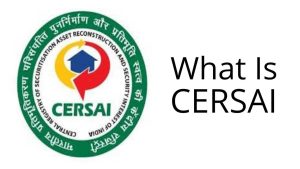RBI Benefits To MSME
In the previous post, we talked about the current government schemes for MSMEs.
Now let’s discuss – the latest RBI benefits to MSME for FY 2020-21
Priority sector lending and interest subvention schemes
Priority sector lending includes only those sectors as part of the priority sector, that impact large sections of the population, the weaker sections, and the sectors which are employment-intensive such as agriculture and MSME’S.
Under the MSMED Act and in order to ensure a sustainable flow of credit to the MSME sector, it was decided to classify the credit given to MSME as priority sector lending.
RBI has issued the following directions regarding the lending to MSME’S for taking it up as a priority sector along with the schemes for subvention of interest:
Master direction – reserve bank of India [lending to micro, small & medium enterprises (MSME) sector] – directions, 2016
Common guidelines/instructions for lending to the MSME sector
| Issue of Acknowledgement of Loan Applications to MSME borrowers | Mandatorily acknowledge all loan applications, submitted manually or online, by their MSME borrowers. |
| Collateral | No need for collateral security if the loans is up to Rs.10 lakh extended to units.Collateral-free loans up to Rs. 10 lakhs to all units financed under the Prime Minister Employment Generation Programme (PMEGP)Bank may increase the limit to dispense with the collateral requirement for loans up to Rs.25 lakh (with the approval of the appropriate authority) |
| Composite loan | Banks can impose a composite loan limit of Rs. 1 crore to allow MSE business owners to use their operating capital and a single window for a term loan requirement. |
| Revised General Credit Card (GCC) Scheme | Enhanced coverage of the GCC Scheme to include more credit for all successful activities within the overall target criteria and to collect all banks’ credit for non-farm corporate activities |
| Credit Linked Capital Subsidy Scheme (CLSS) | (I) The ceiling on the loan under the scheme is Rs. 1 crore. (ii) The subsidy rate is 15% for all units of micro & small enterprises up to loan ceiling at Sr.No. (I) above |
| Streamlining flow of credit to Micro and Small Enterprises (MSEs) for facilitating timely and adequate credit flow during their ‘Life Cycle | Banks are instructed to update and change their current MSE lending policies by taking the following conditions into account:To encourage the speedy and sufficient accessibility of credit to viable MSE borrowers, particularly in unexpected situations when funds are required:Extending a standby credit facility for term loansAdditional working capital to fulfil emerging MSE unit needsMid-term review of the regular working capital limits, where banks are convinced that changes in the demand pattern of MSE borrowers require increasing the existing credit limits of the MSME’S, every year based on the actual sales of the previous year.Timelines for Credit Decisions |
Institutional arrangement
| Specialised MSME branches | The public sector banks are recommended to establish for each district at least one specialized office.The public sector banks would ensure specialized MSME branches in identified clusters/centres with a preponderance of small enterprises to enable the entrepreneurs to have easy access to the bank credit and to equip bank personnel to develop the requisite expertise |
| State Level Inter-Institutional Committee (SLIIC) | In order to deal with the problems of coordination for the rehabilitation of sick micro and small units, State Level Inter-Institutional Committees were set up in the States. |
| Empowered Committee on MSMEs | Collaborate with many banks / financial institutions as well as the state government to remove delays, if any, to maintain effective credit flow to the industry. The committees may agree on the need for similar cluster / district-level committees. |
| Delayed Payment | MSME’s or SSIs purchasers of services or products attempt to prolong the payment. The Ministry of Micro, Small and Medium Enterprise is providing such companies with a sympathetic ear by providing the opportunity to obtain interest on payments which are put on hold from the buyer’s side. By conciliation and arbitration, the resolution of these disputes must be carried out in a reasonable period.When any MSME registered enterprise provides a customer with any products or services then the customer is expected to pay the bill on or before the approved payment date or within 15 days from the day that they approved the goods and services from MSME or SCI registered enterprise (when there is no reference of payment date).If the buyer extends the payment for even more than 45 days after receipt of the goods or services, so the buyer must pay the cumulative interest together with interest (monthly) on the sum promised to pay. The interest rate is three times the rate that is notified by the Reserve Bank of India. |
Liberalized provisioning and debt restructuring:
- Just before Micro, Small and Medium Enterprise debt account becomes a Non-Performing Asset (NPA), banks or creditors can define the initiating pressure in the account by establishing three sub-categories underneath the Special Notice Account (SMA) category as shown in the following table:
| SMA SUBCATEGORIES | BASIS FOR CLASSIFICATION |
| SMA – 0 | The principal or interest payment has not been due for much more than 30 days, but it shows symptoms of incipient stress |
| SMA – 1 | The principal or interest payment overdue between 31-60 days |
| SMA – 2 | The principal or interest payment overdue between 61-90 days |
- When a viable / potentially unit indicates an early stage of failure, a debt restructuring should be applied. In these cases the banks can think to repay the debt, considering additional funds etc.
- For units in the MSME sector, a debt restructuring plan was devised and recommended to all commercial banks. Detailed guidelines were developed to guarantee debt restructuring for all qualifying small and medium-sized enterprises.
TRADE RECEIVABLES ELECTRONIC DISCOUNT SYSTEM (TREDS)
| Background | One big factor which affects the ability of MSMEs to convert trade receivables into liquid funds is slow-paying invoices. In 2014 RBI came up with the concept of TReDS, a system for the funding of commercial receivables for MSMEs on a stable digital platform, to address funding based problems encountered by MSMEs in India. |
| About TReDS | TReDS is an institutional framework set up to promote the legitimately receivable funding of MSMEs by corporate purchasers through multiple financiers. |
| Modus-Operandi | There are three participants involved in TReDS ‘s invoice discount i.e MSME supplier, corporate purchaser and financer. Based on the method of discounting the bill shall be uploaded by the buyer or the manufacturer and accepted by the other party. Upon acceptance of the invoice, the financiers on the platform start bidding on the invoice. The supplier recognizes the bid and also the discounted sum is credited to his account on T+1 day, on which T is the date of acceptance |
| Highlights of TReDS | MSMEs are given greater access to loans at competitive prices without extra collateral being provided. Financing is often without the recourse to MSMEsCorporates can save more than the cost of procurement through excellent bargaining of financing term for their vendors.Financiers get an opportunity to build PSL asset portfolio on Trade Receivable Exchange platforms like M1xchange, RXIL and Invoicemart. |



